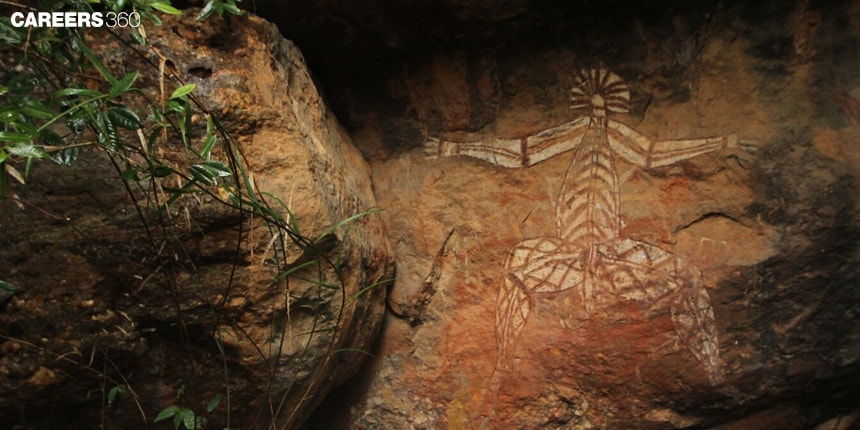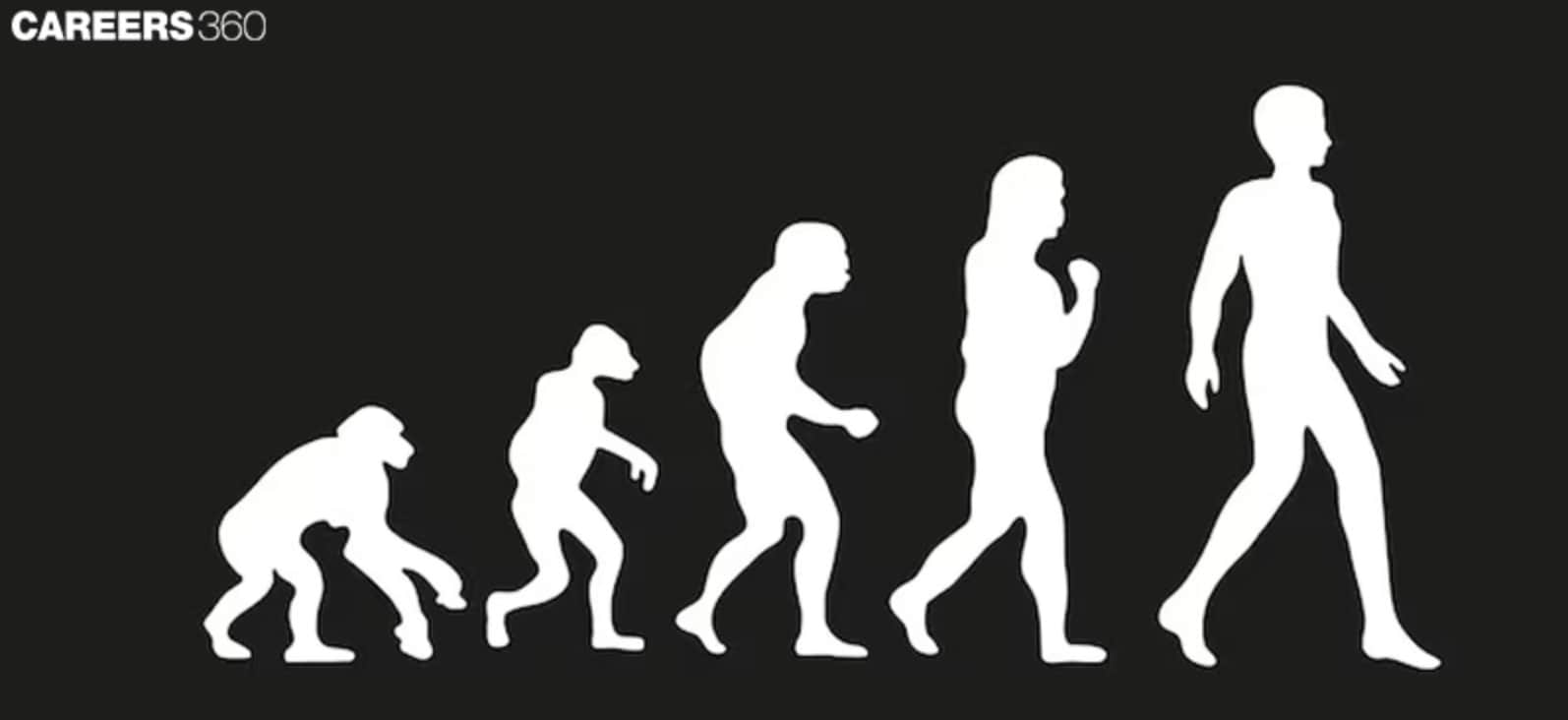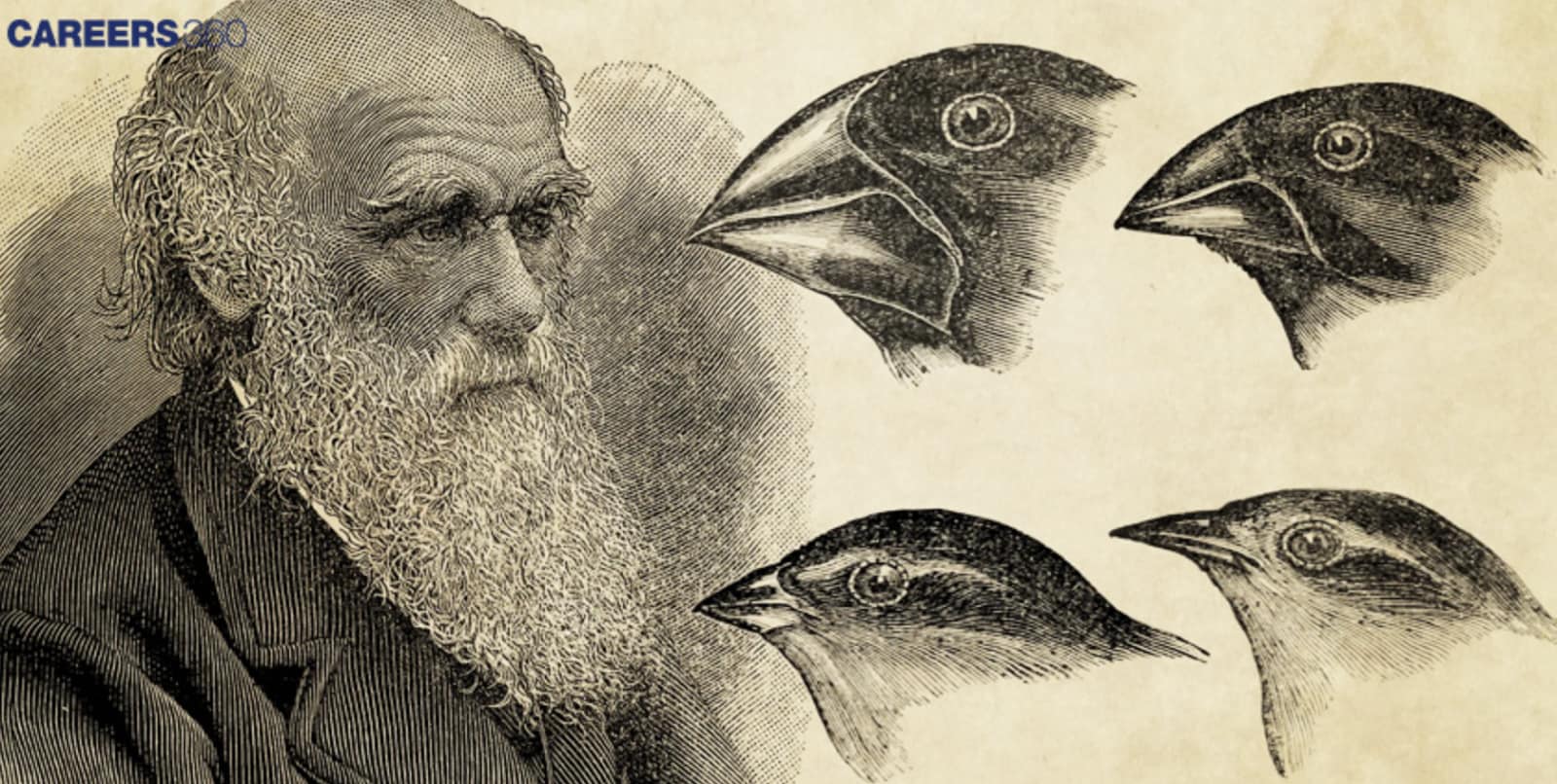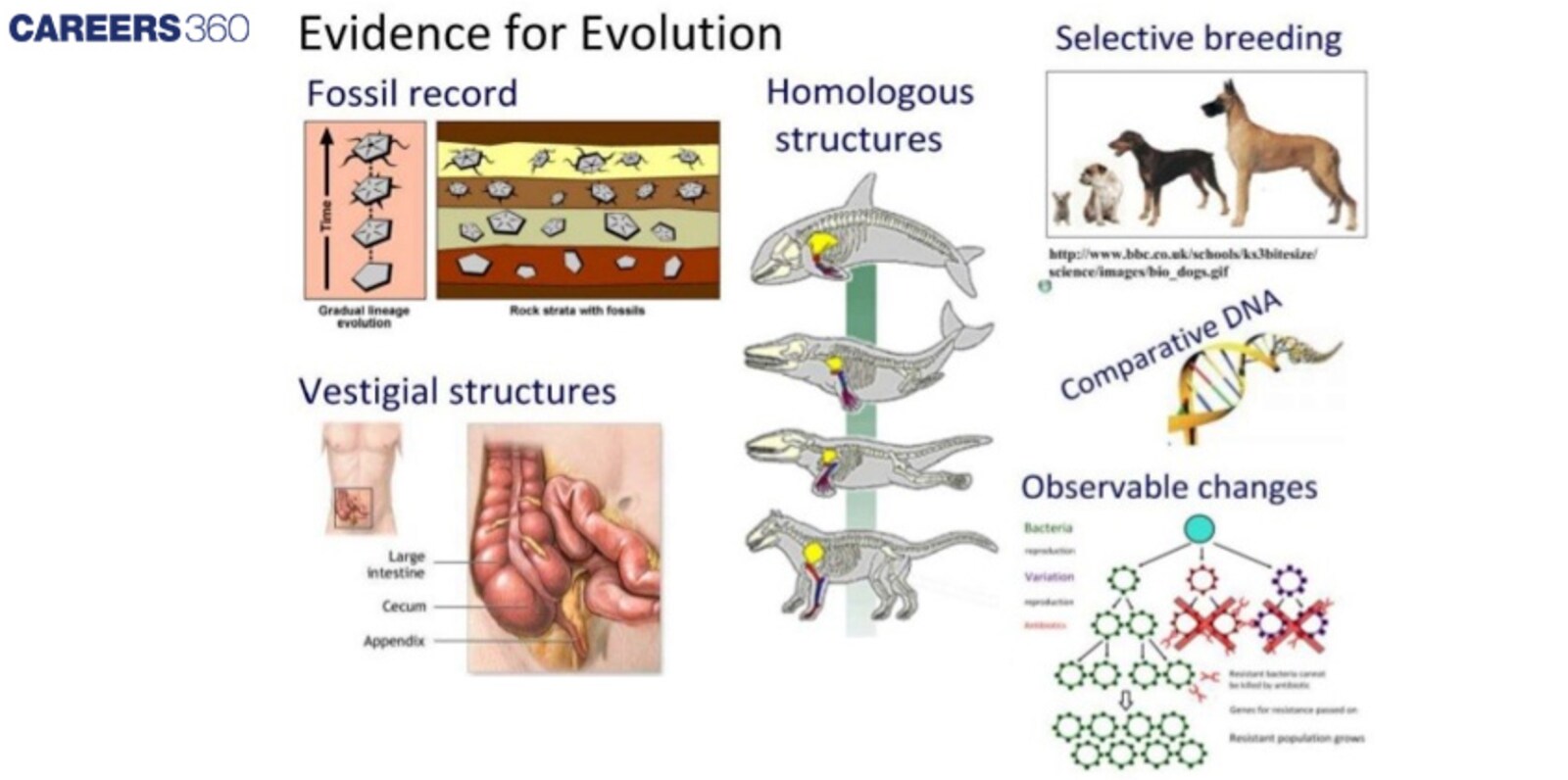Evidence of evolution: Embryology Definition, Steps, Examples
What is Evolution?
Imagine a jigsaw puzzle: every piece narrates part of the story of the past, and as they are fitted together, an image slowly appears about our world's history. This is what it feels like to study evolution. Biological evolution is the change of species through time by way of variations in their genetic material. That change is not a concept in science but actual reality in front of our very eyes. The evidence for evolution has always been around, from fossils of ancient creatures to genetic blueprints that orchestrate the designs of all living things. No wonder that by inference, inescapably, it leads us to realize our place within nature.
NEET 2025: Mock Test Series | Syllabus | High Scoring Topics | PYQs
NEET Important PYQ's Subject wise: Physics | Chemistry | Biology
New: Meet Careers360 B.Tech/NEET Experts in your City | Book your Seat now

Understanding evolution is important because it underpins all of biology. It helps in explaining the diversity of life here on Earth, explaining how species adapt to their environments and their relationships with the rest of the organisms. This paper will give a discussion of the various types of evidence supporting the theory of evolution such as fossils, anatomical structures, embryological similarities, molecular data, biogeography, and observable evolutionary changes.
Early Ideas Of Evolution
Before Darwin, several thinkers had suggested that species evolve, but he was the first unifying theory for these changes. The ancient Greek philosophers, such as Anaximander and Empedocles, proposed that life is built up over time. In the 18th century, the largest contribution to the concept of evolution was made by Georges-Louis Leclerc, Comte de Buffon, and Jean-Baptiste Lamarck; Lamarck was the leading proponent of the theory of inheritance of acquired characteristics, an incorrect explanation of evolutionary change.

Charles Darwin And Natural Selection
Charles Darwin revolutionised the field of biology with his concept of natural selection, for it wasn't simply a proposed way that biological entities evolved, but rather he laid down a great deal of evidence to support his ideas. Much of the credit for the evolution of his theory is given to his travel on HMS Beagle, where he observed different species in the Galápagos Islands. In 1859, Charles Darwin published his seminal work, "On the Origin of Species," in which he clearly and articulately stated the basis for evolution, introducing natural selection as the force for change in evolving organisms.

Types Of Evidence Supporting Evolution
These are the fundamental concepts building a framework for our understanding of evolution today. Each one provides a unique insight into how species have evolved.
Fossil Evidence
Fossils are the direct windows through which this gradual change in species occurred over millions of years. By studying fossils, scientists can reconstruct ancient ecosystems and gain insight into the evolutionary history of life on Earth.
Explanation Of Fossils And Fossilisation
Fossils are the remains or traces of ancient organisms, usually formed by various processes, including mineralization. When an organism dies, it could be eventually buried in sediment, and then, over time, the 'organic material' is replaced by minerals, which form a fossil. These fossils may consist of bones, teeth, shells, footprints, and very rarely, soft tissues.
Transitional Fossils And Their Significance
Transitional fossils, some of the best known being Archaeopteryx and Tiktaalik, provide a record of developmental intermediate stages of groups, modelling gradual evolutionary changes. These fossils prove, in real and vital terms, a transition from one major group to another and how the details of structures and adaptations evolve through time.
Examples Of Transitional Fossils
Archaeopteryx belongs specifically to taxa between dinosaurs and birds and carries features shown in both reptiles and birds such as teeth and feathers. Tiktaalik stands witness to the chapter on evolution from fish to amphibians; it carries features of both aquatic and terrestrial animals, for example, one would notice fins but with limb bones.
Some Major Transitional Fossils Diagrams

Anatomical Evidence
The comparison of structures across species can be used in anatomy to reveal evolutionary relationships. Such similarities and differences in anatomy can be used to get an inference of common ancestry and evolutionary paths.
Homologous Structures
Homologous structures, such as the vertebrate forelimbs, are similar across different species, a condition caused by derivation from a common ancestor. For example, consider the anterior limbs of humans, bats, whales, and cats. All of these limbs serve different functions, but they have similar bones within them, thus indicating that these have evolved from an ancestor.
Analogous Structures
Analogous structures, for instance, the wings of insects and those of birds, cater to similar functions, but these originated from different paths; it is an incredible example of convergent evolution, wherein lineages develop similar adaptations to similar environmental challenges.
Vestigial Organs
Vestigial structures are anatomical features that are observed in reduced form, compared to the corresponding feature in an ancestral species, and are no longer performing the function of that ancestral feature—for example, the human appendix or the pelvis in whales. These structures support the evolutionary history of a species by displaying how certain characteristics are reduced or repurposed over time.
Evidence For Evolution In Embryology
The development of embryos in very different species shows profound similarities, which are much easier to explain if these animals all evolved from a common animal ancestor. Embryological evidence shows that the early developmental processes are conserved among related species due to their shared evolutionary origin.
Early development in embryos of different species shows a similar structure and hence proves their common origin. For example, all vertebrate embryos have pharyngeal pouches and tailed buds, characteristics from a common forefather.
Molecular Evidence
Similarities in DNA and proteins give support for the fact that evolution is real at the molecular level. It traces genetic changes that drive evolutionary processes.
Similarities In DNA And Genetic Code
The same genetic code can be found among all forms of life because it is a shared heritage that reflects the influence of evolution. The genetic information deduced directly from DNA is compared to find any genetic similarities and differences that depict the evolutionary relationship between species.
Protein Comparisons
Cytochrome c proteins show similar amino acid sequences in different species. An example may include sequences of amino acids in cytochrome c from different species. The amino acid sequences are compared among proteins, whereby researchers infer from the evolutionary distances developed in the building units and construct a phylogenetic tree from developed evolutionary relationships.
Genetic Mutations Or Developed Evolutionary Relationships
DNA mutations can track how one species has evolved from another and has therefore diverged over time. Through the study of genetic mutations, scientists know more about the development of new characteristics and how populations evolve.
Molecular Phylogeny
Phylogeny is the visual presentation of evolutionary relationships based on genetic information. A phylogenetic tree depicts the evolutionary pattern of species among one another through common ancestry and therefore explains how they have diversified over time.
Biogeographical Evidence
The distribution of species across the surface of the earth may indicate their evolutionary history. Biogeography involves the distribution of any species that occurs in every geographical region and infers how historical processes, amongst them continental drift, may influence evolution.
Species Distribution Across Different Geographical Areas
The species distribution patterns include events such as continental drift, migration, etc. The study of these patterns in distribution helps scientists deduce how different species spread and adapt to different environments.
Continental Drift And Its Impact On Evolution
The movement of continents over the geological period has affected the distribution and evolution of species. The creation of new habitats and the formation of barriers occurred through continental drift, eventually leading to speciation and diversification.
Example Of Biogeographical Patterns
The case of Darwin's finches from the Galápagos is an example of adaptive radiation, in which a common ancestry radiated different species to exploit available ecological niches. Similarly, the Australian unique marsupials of today show how tectonic continental drift and isolation set up the evolution of species.
Observable Evolution
Some evolutionary changes can be observed in real-time, providing direct evidence for the process. These observations provide concrete examples of how evolution operates and how species adapt to their environments.
Classic examples of natural selection in action are cases such as colour variations of the peppered moth during the Industrial Revolution and the development of antibiotic resistance in bacteria. These represent how fast environmental pressure can change the evolution course.
Short-Term Versus Long-Term Evolution
The evidence for observable evolution ranges from short-term adaptation to long-term evolutionary trends. Some of the changes could appear within a few generations, while others take millions of years, as well; both define equally the dynamics that are involved in eliciting the evolutionary process.
Evolutionary Mechanisms
These explain the kinds of changes experienced in the broad scope of life forms observable in nature. An understanding of them in detail fosters an appreciation for the means of explanations based on how species may be undergoing evolution or adapting to processes over time.
Natural Selection
Natural selection is one of the core mechanisms of evolution, which states that those organisms best adapted to their environment are the ones that do the most surviving and reproducing.
Through this process, an account of how advantageous traits become more common in a population is given.
This variation in a population is what will augment the force of natural selection, and advantageous productive trait delineation will be beneficial to the organisms.
Therefore, organisms with good traits will survive and reproduce, passing the traits on to the offspring.
The workings of natural selection can be made clear with the study of some examples, such as the evolution of antibiotic resistance in bacteria.
There are a plethora of case studies that can demonstrate how new adaptations are wrung by environmental pressures and this leads to evolutionary change.
Genetic Drift
Genetic drift refers to random changes in allele frequencies that have, at any rate, huge effects, especially in small populations.
Chance is underlined by this mechanism as an important factor for changing genetic variation.
Genetic drift could bring out significant genetic change over time in a small, isolated population.
The course of evolution is set by random events, such as natural disasters, in which the frequencies of alleles are drastically altered.
Bottleneck And Founder Effects
Events such as bottlenecks and the founder effect are good examples of genetic drift. While a bottleneck occurs when a population is drastically reduced in size, the founder effect occurs when a new population is formed from a very small group of individuals leading to a lost genetic variation.
Gene Flow
Gene flow refers to the movement of genes from one population to another, which increases genetic variation.
Now, gene flow occurs because of the migration of some individuals from one population to another, therefore adding new genes within the gene pool.
Gene flow occurs because some individuals migrate into another population, adding new genes to its gene pool.
It can introduce new variations and reduce genetic differences progressively over generations.
Examples, such as the mixing of human populations, clearly show the role of gene flow in enhancing genetic variation.
Gene flow thus facilitates adaptation to changing environments by enhancing genetic potential.
Mutation
Though mutation is a random event, it catalyses evolutionary change. Random change in DNA introduces new traits into a population and gives raw material for natural selection and other evolutionary mechanisms to act upon.
Role of Mutations In Evolution
Mutations are one of how new variation is introduced into the gene pool, on which natural selection, together with other evolutionary forces, can act. Even though most mutations are neutral or harmful, some can give an advantage by providing traits that enlarge the survival and/or reproduction of any organism.
Types of Mutation and Their Effects
This can be very different for variants of mutations, from point mutations to large-scale chromosomal change. Various types of mutations may entertain new traits that might or might not add up to genetic diversity and therefore drive evolutionary processes.
Modern Evolutionary Synthesis
Modern evolutionary synthesis comprises both the science of genetics and that of Darwinian evolution into a coherent framework for understanding evolutionary processes. This synthesis of insights from multiple disciplines like palaeontology, systematics, and molecular biology melds together.
The Integration Of Genetics And Darwinian Evolution
The integration between genetics and Darwinian evolution was a significant development towards evolutionary biology. At the behest of key scientists like Theodosius Dobzhansky, Ernst Mayr, and Julian Huxley, this synthesis explained what happened when genetic variation interacted with natural selection to produce evolution.
Recommended video for "Evidences for Evolution"
Frequently Asked Questions (FAQs)
Homologous structures infer common ancestry, and analogous structures infer a similar function but arise to it independently.
Fossils show gradual changes of species through time and thus provide a record of transitional forms that bridge the gaps between major groups.
Yes, Classic cases of evolution in action are the colour variation in peppered moths or several instances of antibiotic resistance in bacteria.
Genetic mutations introduce new variations against which natural selection acts positively, hence driving evolutionary change.
This geographical distribution of species speaks about historical events and evolutionary processes that describe how species adapt to different conditions and spread across the earth.
Also Read
03 Dec'24 10:56 AM
30 Nov'24 08:28 PM
27 Nov'24 08:01 PM
26 Nov'24 11:40 PM
23 Nov'24 01:48 PM
21 Nov'24 05:41 PM
19 Nov'24 02:01 PM
19 Nov'24 11:02 AM
19 Nov'24 08:45 AM
18 Nov'24 10:54 PM